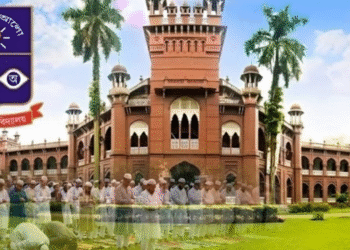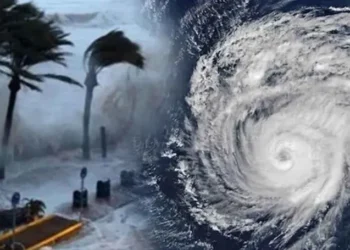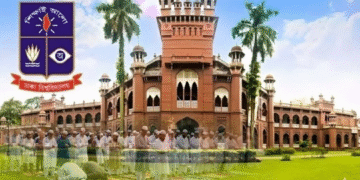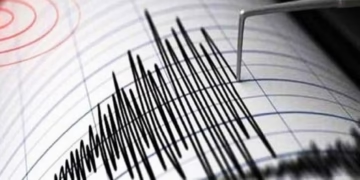Highlights
- Four earthquakes hit Dhaka region within two days, raising public concern.
- A 5.7 magnitude quake killed 10 people and injured 600+, one of the strongest in recent years. Experts warn of up to 20 more earthquakes in the coming week.
- Hidden megathrust fault under Bangladesh could trigger a magnitude 9 earthquake, according to a Columbia University study.
- Bangladesh sits at the junction of three tectonic plates, making it one of the world’s most vulnerable earthquake zones.
Over the past two days, four earthquakes have been felt in Dhaka and surrounding areas. Three of them originated in Narsingdi and one inside Dhaka. One quake struck on Friday (21 November) morning, and three more occurred throughout Saturday (22 November), increasing public anxiety.
On Friday morning (21 November), a 5.7-magnitude earthquake originated near Madhabdi in Narsingdi, about 25 kilometers from Dhaka. The epicenter was located only 10 kilometers beneath the surface. Experts say the shallower the depth, the stronger the shaking. This was one of the strongest tremors in recent memory, shaking Dhaka and other regions violently. Ten people, including children, were killed, and more than 600 were injured.
A study by Columbia University has identified a hidden fault beneath the Ganges–Brahmaputra basin. Experts warn that this fault is capable of generating a magnitude-9 earthquake in Bangladesh. Given the recent tremors, specialists fear that as many as 20 additional quakes may occur in the next week.
Earthquake expert and BUET professor of civil engineering, Mehedi Ahmed Ansari, stated:
দুই দিনে চারবার ভূমিকম্প অনুভূত হয়েছে। এক সপ্তাহের মধ্যে আরও ২০ বার এমনটি হতে পারে। যদি ৫.৭ মাত্রার চেয়েও বড় কোনো ভূমিকম্প হয়, তাহলে স্বল্প সময়ের মধ্যে ভয়াবহ দুর্যোগ হতে পারে। তিনি নরসিংদীকে এই ভূমিকম্পগুলোর উৎপত্তিস্থল হিসেবে চিহ্নিত করেন।
Translation: “We have felt four earthquakes in two days. Another 20 such quakes may occur within a week. If a quake stronger than 5.7 strikes, a catastrophic disaster could unfold in a very short time.” He also confirmed Narsingdi as the source of these recent earthquakes.
Read More:Namaz and Prayer Mahfil Held at Dhaka University Seeking Safety from Natural Disasters
Experts explain that Bangladesh lies at the junction of three tectonic plates—Indian, Eurasian, and Burmese. Rubaiyat Kabir from the Earthquake Observation and Research Center said the plates are beginning to unlock. If the Indian Plate collides more forcefully with the Eurasian Plate, Bangladesh could face severe seismic danger.
A 2016 study identified a massive “megathrust fault” beneath the Ganges–Brahmaputra basin, stretching miles under the sediment. Former Dhaka University geology professor Syed Humayun Akhter explained that along the plate boundary from Sylhet to Teknaf, accumulated energy has remained unreleased for 800 to 1,000 years. The region is as dangerous as the Pacific “Ring of Fire.” DU’s geology department is currently analyzing soil samples collected from the Ghazipur–Ghorashal crack. Former professor ASM Obaidullah said the tests will help determine the depth and characteristics of the recent quake.
Experts also point out that the 1762 quake on the Teknaf–Myanmar fault—measuring 8.5—lifted Saint Martin’s Island by three meters. Energy is accumulating again in that region. If the plate movement continues, Bangladesh must prepare for even stronger future earthquakes.
Source: RTV
















